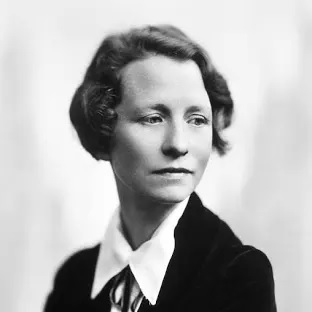
Edna St. Vincent Millay, a prominent poet of the early 20th century, faced significant discrimination in the literary world, particularly in poetry competitions dominated by male judges. Her experiences reflect the broader societal biases that favored male poets, often sidelining the works and contributions of women.
In “Restless Spirit,” Millay’s struggles highlight the gender preferential treatment prevalent in her time. Male judges often overlooked female poets, dismissing their work as less serious or impactful. This bias not only affected Millay’s recognition but also shaped the literary canon, which has historically celebrated male authors while marginalizing female voices.
The term “firing the canon” refers to the critical reevaluation of literary history, challenging the traditional narratives that prioritize male achievements. Contemporary scholarship seeks to rewrite these narratives, addressing ingrained male chauvinism and acknowledging the significant contributions of female poets like Millay. This shift aims to create a more inclusive literary landscape where the voices of women are given the recognition they deserve.
As we reassess the canon, it becomes clear that the works of poets like Millay offer profound insights and artistry that have long been underappreciated. By confronting and dismantling the biases of the past, we can foster a richer understanding of poetry that honors all voices, regardless of gender. This ongoing effort to rectify historical injustices in literature is crucial in promoting equity and diversity in the arts.
Edna St. Vincent Millay was a prominent American poet known for her lyrical and emotional work. Her poem “Renaissance” is often noted for its exploration of themes such as love, loss, and the human experience.
Many critics and supporters felt that “Renaissance” was deserving of a higher rank than the third place it received from the judging panel of in the 1912 Poetry contest, which was dominated by male judges.
This situation sparked discussions about gender bias in the literary world, highlighting how male critics often undervalued the work of female poets. Millay’s work was seen as groundbreaking, and the complaints raised about the judging process illustrated the broader struggle for recognition faced by women writers at the time.
The controversy surrounding “Renaissance” and its placing in the rankings served to amplify Millay’s voice in a male-dominated field and brought attention to the need for greater equity in literary awards. Millay’s subsequent success and recognition helped pave the way for future generations of female poets.
To dilate on the issue, there has been a complaint regarding the ranking of one of Edna St. Vincent Millay’s poem, which was rated 3rd when it was expected to be ranked first in the 1912 Poetry contest. This issue has been discussed in the context of the book “Restless Spirit: The Life of Edna St. Vincent Millay” by Miriam Gurko. Renaissance was an exceptional one.
The poem was underrated by male chauvinists. This led to a complaint from a participant who believed it deserved to be ranked first. In a surprising turn of events, the man who was awarded first place refused to accept the prize, likely in solidarity with the complaint regarding the ranking of Millay’s work.
At this juncture it is appropriate to see one of the greatest feminist works of Edna that won her global fame. To help you out better understand the poem let us do some interpretation.
“The Ballad of the Harp-Weaver” by Edna St. Vincent Millay is a poignant narrative poem that explores themes of maternal love, sacrifice, and poverty. The poem is narrated by a son who reflects on his childhood experiences with his devoted mother as they endure extreme hardship during a harsh winter. In the 1923 Pulitzer Prize for Poetry Millay’s “The Ballad of the Harp-Weaver,” which celebrated motherhood and sacrifice, won the Pulitzer Prize that year.
Key Elements of the Poem:
- Setting and Context: The story unfolds in a stark, impoverished cabin where a mother and her son struggle to survive. They face severe cold and hunger, often burning their furniture for warmth and lacking proper clothing for the boy to attend school.
- The Mother’s Sacrifice: On Christmas Eve, as the boy tries to sleep, his mother plays a magical harp, which transforms into a loom. Through her music, she weaves beautiful clothes for her son, symbolizing her love and dedication. However, this act of creation comes at a great cost, as she ultimately sacrifices her life in the process.
- Themes of Love and Loss: The poem highlights the unconditional love of a mother, who strives to provide for her child despite their dire circumstances. The boy’s realization of his mother’s sacrifices leads to a profound sense of loss when he discovers her lifeless body surrounded by the clothes she made for him. This raises questions about the value of her sacrifices and the future that awaits the boy after her death.
- Imagery and Symbolism: The harp serves as a powerful symbol throughout the poem, representing both the mother’s artistic spirit and the burdens of motherhood. It reflects the tension between her desires and her responsibilities, ultimately illustrating the complexities of a woman’s role in society.
In summary, “The Ballad of the Harp-Weaver” is a heart-wrenching tale that captures the essence of a mother’s love and the sacrifices made for her child, set against the backdrop of poverty and isolation.
The poem run as follows
BY ALEM HAILU G/KRISTOS
THE ETHIOPIAN HERALD SATURDAY 8 MARCH 2025





